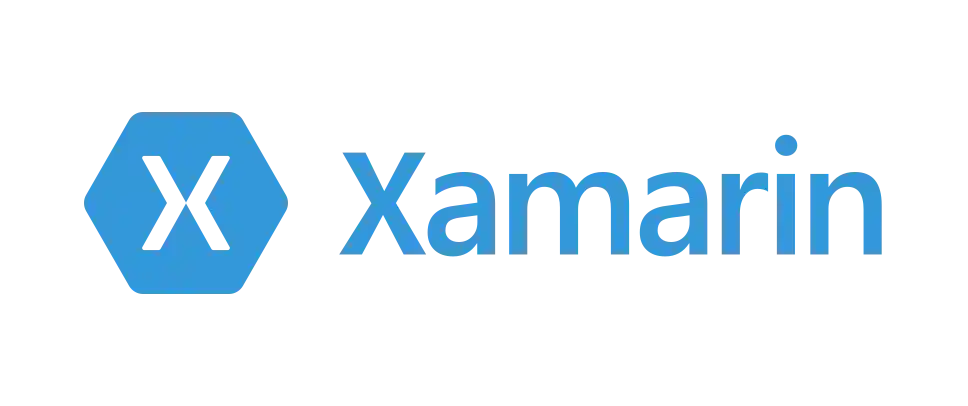Table of Contents
Introduction
In the dynamic landscape of mobile app development, where innovation is a constant and user experience is paramount, the choice of Cross-Platform Frameworks emerges as a critical decision for developers and businesses alike. These frameworks serve as the backbone for creating applications that transcend the confines of a single operating system, enabling developers to deliver seamless and consistent experiences across diverse platforms.
As technology continues to advance, the demand for high-performance, visually appealing, and feature-rich mobile applications has skyrocketed. Cross-platform frameworks have emerged as a strategic approach to address this demand, allowing developers to write code once and deploy it on multiple platforms, saving time and resources while ensuring a broad user reach.
Whether you are a seasoned developer seeking to expand your toolkit or a business owner aiming to make informed decisions for your next mobile app project, this comparison aims to be your compass in navigating the diverse sea of options available within the realm of Cross-Platform Frameworks.
Let’s embark on this insightful journey to uncover the nuances of React Native, Ionic, Flutter, and Xamarin, and equip ourselves with the knowledge to make strategic decisions in the dynamic and competitive field of cross-platform mobile app development.

1. React Native

As one of the prominent Cross-Platform Frameworks, React Native leverages JavaScript and React, making it accessible for developers well-versed in these technologies. With a large and active community, React Native remains a popular choice for those seeking efficient code sharing across Android and iOS.
Its “learn once, write anywhere” philosophy allows developers to apply their knowledge consistently, reducing the learning curve for cross-platform development.
Moreover, React Native offers a rich set of pre-built components and libraries, streamlining the development process and enabling the creation of high-performance mobile applications. The framework’s continuous evolution, coupled with Facebook’s ongoing commitment, ensures that React Native stays at the forefront of cross-platform mobile development, making it an attractive option for businesses and developers alike.
Pros:
- JavaScript/React Knowledge: React Native leverages JavaScript and React, making it accessible for developers with experience in these technologies.
- Large Community: Benefit from a vast and active community, ensuring continuous support, updates, and many third-party libraries.
- Performance: While not as performant as fully native apps, React Native offers good performance. It allows the integration of native modules for tasks requiring higher computational power.
Cons:
- Bridge Overhead: Communication between JavaScript and native modules introduces a bridge, which can impact performance in computationally intensive scenarios.
- Access to Native Features: Some advanced features may require the use of native modules, potentially adding complexity.
Users:
- Facebook: React Native was developed by Facebook, and the company uses it for several of its applications, including the main Facebook app.
- Instagram: The popular photo and video-sharing platform, owned by Facebook, utilizes React Native for parts of its app.
- Airbnb: The travel and accommodation marketplace leverages React Native for its mobile app development, enabling a consistent experience across platforms.
2. Ionic

Ionic, built using standard web technologies, brings a unique flavor to the realm of Cross-Platform Frameworks. Developers with expertise in HTML, CSS, and JavaScript find Ionic appealing. Its versatility shines as a single codebase can be deployed across various platforms, including the web. This web-centric approach not only simplifies development but also aligns with the broader trend of progressive web apps (PWAs).
Ionic’s framework is designed to create not just mobile apps but also web applications, providing a seamless transition between platforms. With a focus on UI consistency and a library of pre-built components, Ionic enables developers to craft visually appealing and responsive applications while maintaining code efficiency across different devices and screen sizes.
Pros:
- Web Technologies: Ionic is built using standard web technologies (HTML, CSS, JavaScript), enabling web developers to transition seamlessly.
- Single Codebase: Develop once and deploy across various platforms, including the web, using a unified codebase.
- Rich UI Components: Ionic provides an extensive library of pre-designed UI components, simplifying the development of visually appealing applications.
Cons:
- Performance: While suitable for many applications, performance may not match that of fully native solutions, particularly in resource-intensive scenarios.
- Native Access: Access to native features may be limited, and reliance on plugins might be necessary for some functionalities.
Users:
- Pacifica: Pacifica is a mental health app that helps users manage stress, anxiety, and depression. It is built using the Ionic framework.
- MarketWatch: The financial news and information app MarketWatch uses Ionic for its cross-platform development.
- Sworkit: Sworkit, a fitness app that provides customizable workout plans, is developed using the Ionic framework.
3. Flutter

Flutter, a creation of Google, stands out among Cross-Platform Frameworks. Written in the Dart programming language, Flutter boasts an impressive performance by compiling native ARM code. This compilation of native code allows Flutter applications to achieve near-native performance on both Android and iOS platforms.
Flutter’s real strength lies in its rich set of customizable widgets, which enable developers to craft visually stunning and consistent UIs across devices.
The “hot reload” feature facilitates rapid development and experimentation, making it easier for developers to iterate and refine their applications. With Google’s backing and a growing community, Flutter continues to evolve, offering a compelling solution for those who prioritize a high-quality user experience and development efficiency.
Pros:
- Dart Language: Flutter uses the Dart programming language, offering a reactive and expressive syntax for developers.
- Performance: Flutter boasts impressive performance by compiling native ARM code, resulting in near-native performance.
- Customizable Widgets: A rich set of customizable widgets allows developers to craft highly customized and consistent UI across platforms.
Cons:
- Learning Curve: The Dart language and Flutter framework may have a steeper learning curve for unfamiliar developers.
- Smaller Ecosystem: While growing, Flutter’s ecosystem is less extensive than other frameworks.
Users:
- Google Ads: Google Ads, a key advertising platform, uses Flutter for its mobile app to provide a unified experience on both Android and iOS.
- Alibaba: Alibaba, the Chinese e-commerce giant, has used Flutter for parts of its Xianyu app, a platform for buying and selling second-hand goods.
- Reflectly: Reflectly is a journaling app that leverages Flutter for its development, offering a visually appealing and smooth user interface.
4. Xamarin

Xamarin, a Microsoft-owned framework, stands out in the landscape of Cross-Platform Frameworks by employing the versatile C# programming language. Offering a robust and comprehensive set of tools, Xamarin allows developers to create native-like applications for Android and iOS while sharing a significant portion of the codebase.
This language flexibility is particularly advantageous for enterprises with existing C# codebases and skilled .NET developers. Xamarin.Forms, a component of Xamarin, empowers the creation of a single, shared user interface across platforms, streamlining the development process.
Xamarin also ensures seamless integration with Microsoft’s development ecosystem, offering synergies with Visual Studio and Azure services. With a commitment to native performance and a strong focus on code reusability, Xamarin remains a powerful choice for organizations seeking robust cross-platform solutions that leverage the familiarity of C# and the strength of the .NET ecosystem.
Pros:
- C# and .NET: Xamarin utilizes C# and .NET, providing developers with a familiar and powerful development environment.
- Native Performance: Xamarin allows the development of native-like applications with performance comparable to fully native solutions.
- Code Sharing: Significant code sharing across platforms is possible, reducing development time.
Cons:
- Learning Curve: Developers may need to learn Xamarin.Forms framework, which can have a learning curve.
- Community Size: While Xamarin has a supportive community, it may not be as extensive as communities for some other frameworks.
Users:
- Microsoft News: The Microsoft News app is built using Xamarin, demonstrating its capability to deliver a consistent user experience across different platforms.
- UPS Mobile: The UPS Mobile app, which allows users to track packages, find UPS locations, and more, is developed using Xamarin.
- Azure DevOps: Xamarin is part of the Microsoft ecosystem, and Azure DevOps, a set of development tools, uses Xamarin for cross-platform mobile development.
Conclusion: (Cross-Platform Frameworks)
Choosing the right Cross-Platform Frameworks is a crucial decision for mobile app developers. Whether you prioritize familiarity, performance, or code sharing, each framework in this top-four list offers unique strengths. Consider your project requirements, team expertise, and long-term goals to make an informed decision in the diverse world of Cross-Platform Frameworks.
As technology continues to evolve, staying informed about the latest advancements in Cross-Platform Frameworks becomes imperative. The landscape is dynamic, and new features, optimizations, and community-driven innovations are constantly shaping the development experience. Engage with the Cross-Platform Frameworks community, attend conferences, and keep an eye on updates to ensure that your chosen framework aligns with industry trends and continues to meet the evolving demands of mobile app development.
In the competitive realm of mobile app development, the versatility and adaptability of Cross-Platform Frameworks open doors to new opportunities and efficiencies. Your journey with these frameworks is not just about creating applications; it’s about future-proofing your projects and ensuring they evolve seamlessly. The choices you make today in selecting Cross-Platform Frameworks will influence your development workflows, collaboration models, and the scalability of your apps tomorrow.
Embrace the continuous learning inherent in this dynamic ecosystem, leverage the strengths of each framework, and let the spirit of innovation guide your path. With the right Cross-Platform Frameworks, you’re not just building apps; you’re crafting experiences that transcend platform boundaries, leaving a lasting impact in the ever-evolving world of mobile development. Happy coding and may your apps reach new heights!